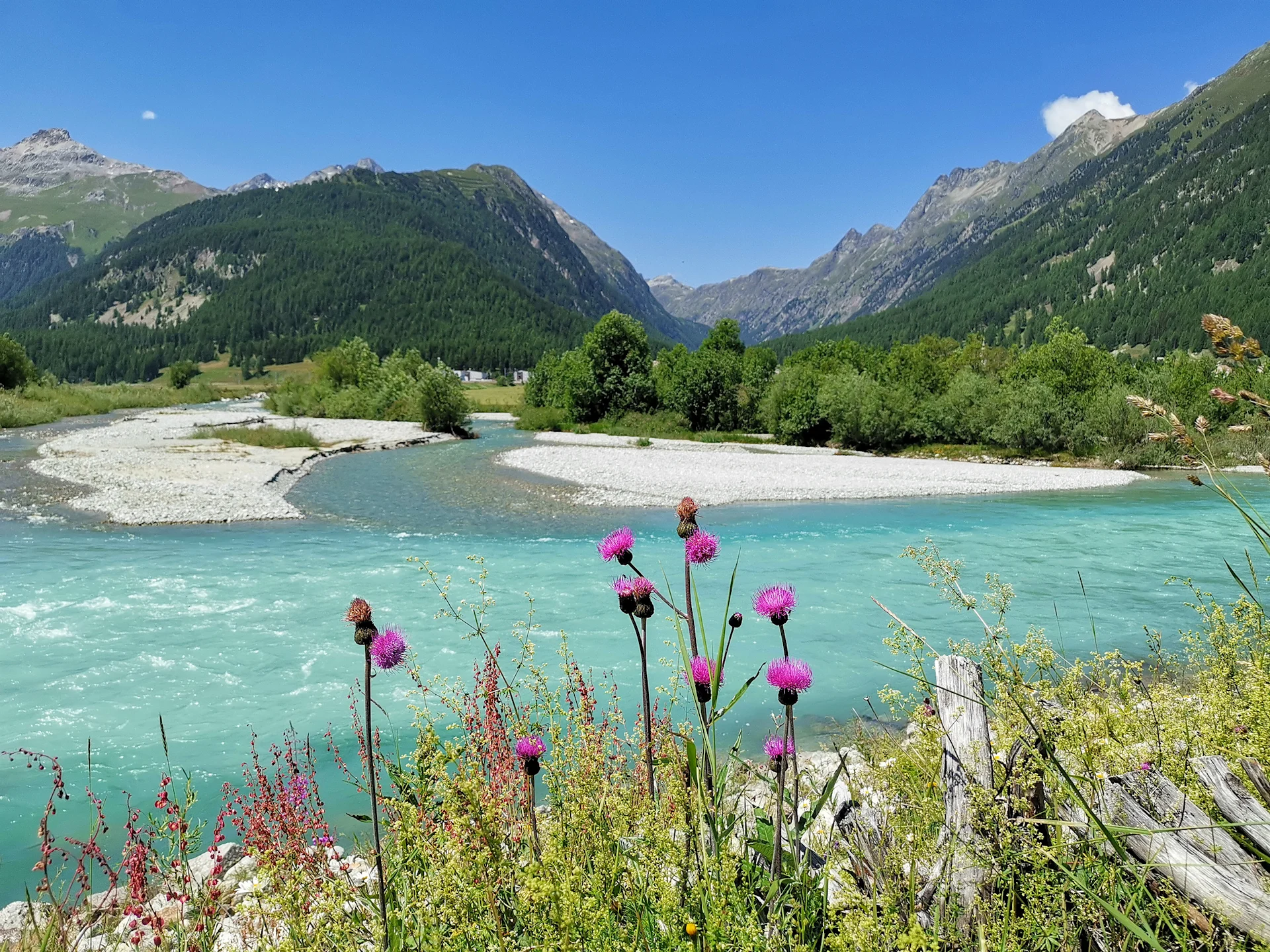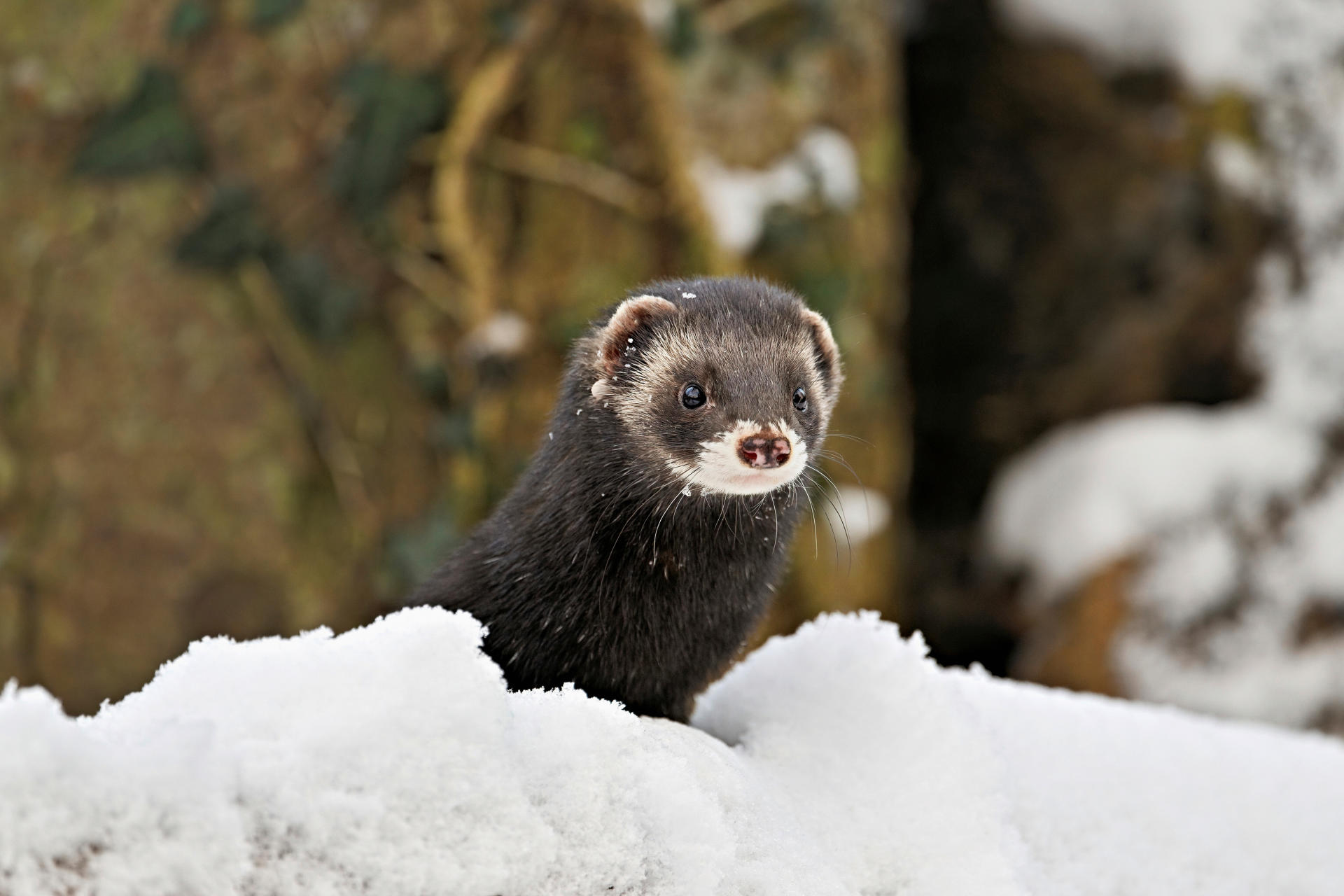
Biodiversity
Back to nature
The example of Bever shows the benefits of renaturation the floodplains. We also present four day trip destinations.
navigation

Biodiversity
The polecat is the animal of the year for 2024. What you need to know about the little hunter.
The European polecat or forest polecat belongs to the marten family. Like the marten, the polecat is also a predator. Outside the mating season, polecats are solitary animals. Their home ranges are between half a square kilometre and several square kilometres in size – depending on the food supply. Polecats are mainly active at night and are good swimmers. The ferret is a domesticated species of polecat.
Polecats look like martens. They have brown and black fur. They are clearly recognisable by the white markings around their nose and along the edges of their ears. Male polecats grow up to 45 centimetres in length and weigh a maximum of 1.5 kilograms. Females are significantly smaller and lighter.
Polecats are found almost everywhere in Europe. In Switzerland, they live at altitudes of up to 1,600 metres. However, they have disappeared in Ticino and southern Valais. They like to stay out of sight and therefore prefer embankments and hedges along streams and wetlands.
This small species of marten feeds mainly on frogs and toads. But other small animals, such as mice and amphibians, are also on the menu. On rare occasions, they resort to insects, eggs or carrion.
In the wild, polecats can live up to eight years. However, between 70 and 90 per cent of the animals do not live longer than one year, as they struggle to survive the winter. In captivity, the animals live for up to 14 years.
The polecat is both a predator and prey. Eagles, eagle owls and foxes, as well as cats and dogs, are its natural enemies.
Not exactly. But in winter polecats are less active and rarely leave their home territory. Polecats, after all, have thin fur. This means they need shelter in winter, especially at higher altitudes. They may also hide in quiet corners of barns and stables. Before the first snow falls, the little hunters also eat around a third of their body weight in fat.
Polecats can be real stink bombs. If danger threatens, they spray a foul-smelling secretion from their anal glands.
Yes, they are classified as “vulnerable” on Switzerland’s Red List of Mammals. Although they are still widespread at lower altitudes, they are not a common sight. The problem is that polecats can only roam the cultivated landscape outside the forest if it offers plenty of natural protection. However, this is less and less the case in Switzerland. If polecats have to leave their safe cover, they are at the mercy of their predators in open areas. In addition, the animals are increasingly required to cross roads and are run over in the process.
To protect polecats, Pro Natura is calling for the creation of networked cultural landscapes with plenty of hiding places throughout Switzerland. The “Aktion Hase & Co.” campaign, for example, is committed to increasing natural diversity on agricultural land. Various projects throughout Switzerland are supported through this effort.
Promoting biodiversity: we can't do it on our own. Play your part now and protect Switzerland's biodiversity together with us!